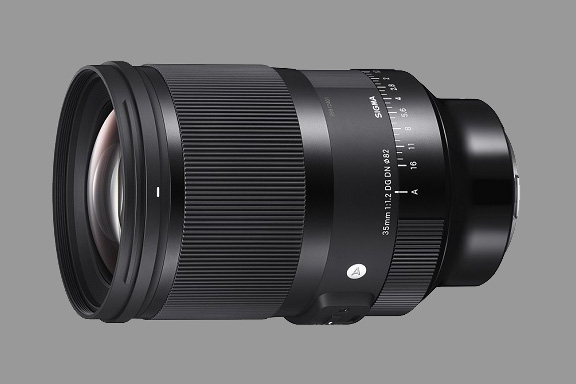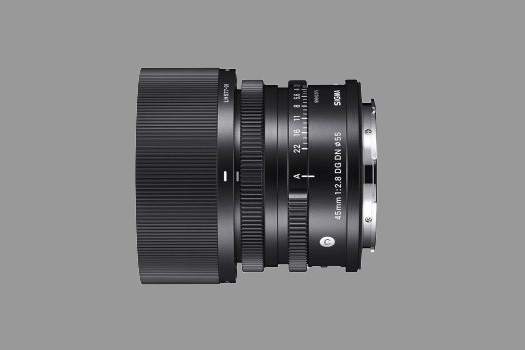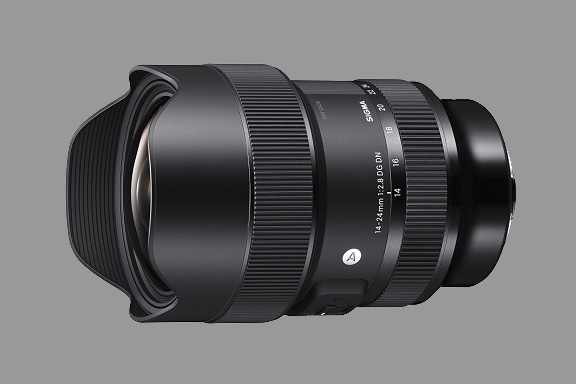Sigma’s popular Art lens series is getting overhauled for mirrorless cameras. On Thursday, July 11, Sigma unveiled three new lenses in a new series for full-frame mirrorless cameras, including the company’s brightest aperture yet on the new Sigma 35mm F1.2 DG DN Art. The new series, which also includes the Sigma 45mm F2.8 DG DN Contemporary and 14-24mm F2.8 DG DN Art, are designed for L-Mount and Sony E-Mount bodies, including Sigma’s own Fp camera.
Sigma says the new line is designed to give photographers more optic options with a better mix of performance and features than using multiple camera systems. While the series is new, the full-frame lenses will use the same Art, Contemporary and Sports designations of the company’s existing lens options. Because the series is designed specifically for mirrorless and not multiple camera types, the lenses tend to be smaller than the company’s other Art lenses.
Headlining the new series, the Sigma 35mm F2.8 DG DN Art uses the company’s brightest aperture yet while also sitting as the first wide-angle F1.2 for both the Sony E-Mount and L-Mount systems. The bright aperture is paired with aspherical lenses and anti-glare coatings to deliver high-quality images even when shooting wide open, the company says.
Sigma says that the lens design — which uses 17 elements in 12 groups — is designed for pairing with high-resolution camera bodies, with the optics to capture images beyond 50 megapixels. The lens also uses in-camera distortion correction, while the optics itself help to fight aberration. Those optics are adjusted using a Hyper Sonic Motor for autofocus.
Like Sigma’s DSLR Art series, the lens comes in a weather-sealed housing. The lens body also houses an autofocus lock button, a de-click aperture ring, and focus-by-wire ring for manual focus.
Also sporting the Art designation, the Sigma 14-24mm F2.8 DG DN is designed for astrophotography and other low-light wide-angle shots. Sigma says the newly developed lens uses optics designed to suppress distortions that create issues with astrophotography, including chromatic aberration and coma flare. Sigma claims the lens offers uniform resolution even out to the edges of the frame and is designed to better handle backlighting.
The lens uses a quiet autofocus stepping motor and also offers a full-time manual focus mode. Like other Art lenses, the 14-24mm is weather-sealed. More unique to the ultra-wide zoom, the lens also offers a rear filter holder for sheet-style rear filters.
Rounding out the trio of new lenses, the Sigma 45mm F2.8 is designed to mix a compact size with performance, weighing 7.5 ounces and measuring less than 2 inches long. Sigma says the lens is designed for soft bokeh and sharper shots when stepping down the seven-blade aperture.
The lens uses a stepping motor for autofocus that Sigma says also works for video, as well as facial detection and eye detection. On the exterior, the lens is weather-sealed and uses a metallic build for several main parts.
The two prime lenses will be available this month, while the 14-24mm is slated for an August arrival. Sigma hasn’t yet shared pricing details for the new lenses.
The new series comes after Sigma joined forces with Leica and Panasonic to create the L-Mount Alliance creating a full-frame mounting system that crosses multiple brands. Earlier this year, Sigma announced 11 existing Art lenses would be available in the new mount.
Editors' Recommendations
- Smaller and cheaper, the full-frame Lumix S5 is exactly what Panasonic needed
- Sigma’s mirrorless ultra-telephoto is so light you’ll actually want to use it
- Sony’s new ultra-wide, ultra-bright lens is the widest E-mount prime yet
- The best Sigma lenses offer affordable quality for DSLRs or mirrorless cameras
- The best Sony lenses for E-mount mirrorless cameras







